|
Edited by Frank R. Shaw, FSA Scot, Greater Atlanta, GA, USA
Email: jurascot@earthlink.net
Slowly but surely I have
been seeing a wish of mine come true! Many years ago and yet it seems
only like yesterday, I found myself in the company of some ladies and
gentlemen from the University of Glasgow. Over a brief period of time I
was exposed to many of them delivering speeches on Robert Burns, and
they basically made my heart beat faster. My knowledge of Burns
increased as I grew more excited over the years about their depth of
knowledge of Burns. My long time goal was to get each of them to speak
at my hometown Burns Club in Atlanta, Georgia. Week before last, one
other man of great knowledge joined the ranks of those great speakers at
our Burns cottage, and his name is Murray Pittock. Murray is a
first-rate Burns scholar, and the speech he delivered is already
promised to the European Romantic Review in 2016.
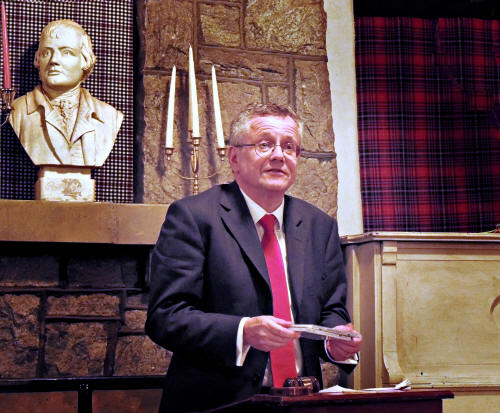
Professor Murray Pittock
Murray’s talk to our membership was among
the very best I have had the privilege of hearing over the years, and a
huge explanation was stamped on his speech at the conclusion by those
present as they affirmed my feelings with an extended ovation. I must
share a word received from a club member in a note (not an email, mind
you, but a real handwritten note) mailed to me from Boston by one of
those present for this remarkable evening. Dave Llewellyn wrote:
“Murray’s presentation…was extraordinarily enlightening and
entertaining. Thanks so much for getting him to speak to us – it was the
highlight of the year so far, as far as I am concerned.”
As the list of Glasgow speakers grows smaller and smaller to our unique
meeting place to celebrate Burns, I must admit we are still in for
further treats. The great thing about all of this is that the previous
speakers are welcome to return to our Burns Cottage to warm our hearts
and strengthen our resolve to know more and more about Burns. Thanks,
Murray, and “haste ye back!”
I am pleased to be able to share with you below another article written
by Murray. The pictures used here are courtesy of Burns Club member
extraordinaire Keith Dunn. (FRS: 10.21.15)
Burns: Monument and Memory
Murray Pittock
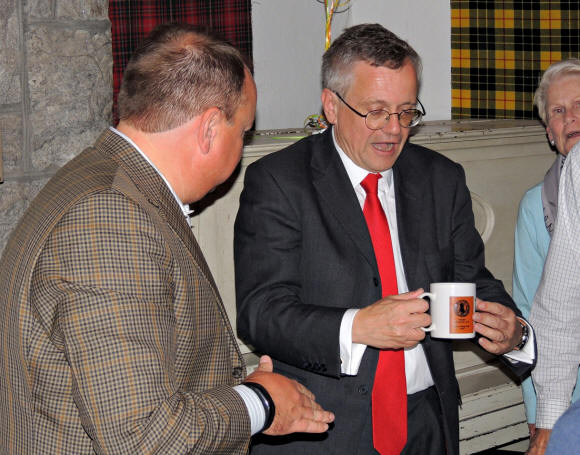
Receiving the famous Atlanta Burns Club Mug
Robert Burns is probably the very first poet
to benefit from the nineteenth-century explosion of public monuments and
celebrations of writers and scientists, which created a sense of shared
cultural and national identity combined with the prospect of personal
opportunity. As in the case of James Watt, the many public statues and
acts of commemoration dedicated to Burns gave both a sense of the status
and achievement of the poet and the message that even people of quite
humble background could aspire to the highest standing in their society.
This was not solely an American phenomenon, by any means: the importance
of individual success in cultural or scientific fields from outwith the
traditional preserves of the aristocracy was central to the creation of
public memory in Europe. The Schiller centenary of 1859 was central to a
growing sense of German common purpose; the 600th anniversary of Dante’s
birth in 1865 marked out the cultural heritage and ambition of the
Italian state, while the struggle for Hungarian independence associated
with the name of Louis Kossuth was itself linked to the use of Burns as
a source of inspiration.
Burns’ posthumous reputation may have entered this sphere early because
he himself had laid the groundwork for the posthumous market in his
reputation. Definitively local (Coila’s bard, the lad from Kyle), he was
also emphatically ‘the National Bard’ in his own estimation and that of
others; nor was he shy in writing on global affairs, particularly those
associated with revolution and radical change. The rest of this short
article focuses on one dimension of his international reputation: the
Burns Monument.
The Choragic Monument of Lysikrates in Athens was erected in 334 BC near
the Akropolis to commemorate a first prize in the musical performance in
the Theatre of Dionysos. Lysikrates was the sponsor who erected it. The
monument-which initiated the Corinthian style could be seen as a tribute
to Athenian cultural supremacy at the moment of Athens’ defeat. Athens
was now under Macedonian rule, following the defeat at Chaeronaea in 338
BC. The Athenian view of the Macedonians as barbarians could be seen as
making the monument’s stress on cultural achievement a mark of Athenian
superiority at a critical moment in Athenian history.
From the 1760s onwards, when drawings of it were brought back to Great
Britain, the Choragic Monument became a widely reproduced style.
Imitations in landscape gardens demonstrated the cultural ascendancy and
powers of patronage in the hands of the British aristocracy. And yet it
was this monument that was the model for celebrating the much more
humble figure of the Ayrshire poet, perhaps the first time it had been
used for celebrating individual achievement in the modern world.
1. Choragic Monument of Lysikrates
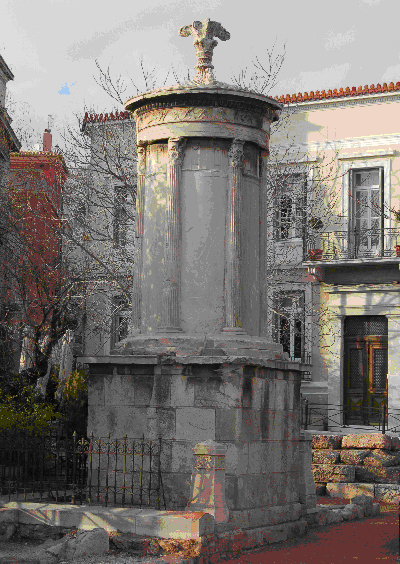
Thomas Hamilton (1784-1858) won the 1817 competition to design a
monument at Alloway. His design was clearly based on the Choragic
Monument. It was a profound statement of Burns’s cultural significance
as a poet, but it was also highly suggestive. The Athenian cultural
superiority signified by the initial monument was manifested in the
spread of Attic (Athenian) Greek as the standard variant of the
language, a victory won at the expense of other variants, chiefly the
Doric associated with Theocritus, an example for Scottish pastoral
poetry and invoked by Burns in his Preface to the Kilmarnock edition.
‘Doric’ had of course been borrowed as a word for ‘Scots’ by Allan
Ramsay, in order to provide a counterweight to the rise of standard
English. In other words, the celebration of Burns’ local fame as a
writer of ‘Doric’ poetry was manifested through a monument which could
be seen as endorsing the claims of Athens as the home of the true Greek
language and culture. Hamilton’s monument thus manifested a paradox: yet
ultimately the meaning of that paradox was that Burns’ very localism had
not limited his universal power and relevance. This in its turn made
great claims for Alloway and Ayrshire: from small beginnings, one of its
sons had become a world figure in the universally recognized terms of
the cultural prestige of the classical world.
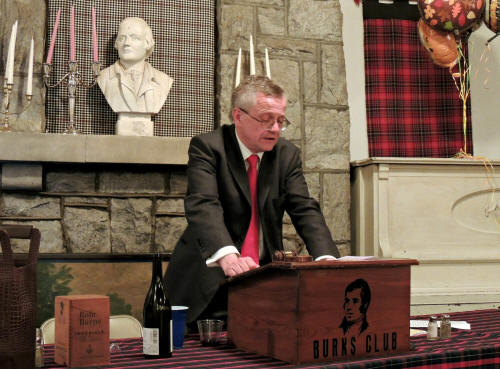
2. The Burns Monument at Alloway
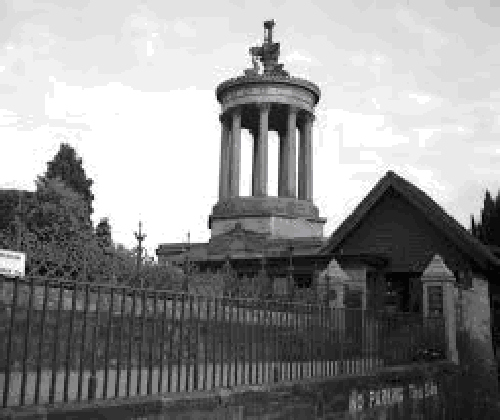
The later Edinburgh Monument reinscribed the power of Burns read through
the Choragic Monument in a different context. Here, on Calton Hill at
the height of the Athens of the North, Burns’ universal relevance to
Scotland’s capital as to Greece’s greatest city spoke not only of a link
between the two, but also of the intellectual and literary superiority
of Edinburgh, home of Blackwood’s and The Edinburgh Review, to say
nothing of the manifold achievements of the Scottish Enlightenment. Who
was it superior to? Why, London of course: the analogy with Athens and
empire-chasing Macedon in the 330s BC was there to be read off the
imitation of Lysikrates which celebrated Burns in Edinburgh.
Thus, both in Alloway and Edinburgh, the Burns Monument is a
manifestation not only of Burns’ first mover status as an agent of
cultural memory, but also of the prestige with which his name was
invested, and the complex language of relevance and power represented by
his monuments and their classical model. Public monuments of this kind
were to serve as a primary mode of creating social frameworks for memory
in the nineteenth century for a more public audience, as once art had
been for an aristocratic audience. Burns and Burns’ celebration was a
pioneering example of the democratization of art in the very act of its
apparently elite commemoration through expensive and prominent
monuments. But then, the Choragic Monument itself had not been cheap,
and yet Athens was in the cultural memory of the western world-the home
of democracy.
|

